In celebration of the Mini’s recent 60th anniversary, British Motor Heritage has compiled 60 facts and figures about the iconic car. It’s amazing how such a small car can be so full of surprises…
- Over 5.3 million – the number of Minis produced between 1959 and 2000 (though the exact figure is disputed)
- 10x4x4 feet – the size of the box into which Leonard Lord, the head of BMC, insisted the Mini should fit. It ultimately exceeded the prescribed length by a quarter of an inch
- The generous door pockets are said to have been sized to accommodate the ingredients of designer Alec Issigonis’ favourite drink of dry martini – ie bottles of Gordon’s gin and vermouth
- 27 – the world record for the number of people crammed into a classic Mini
- £182,000 – the most paid for a Mini at auction, the Radford de Ville Cooper S once owned by Paul McCartney
- Early prototypes employed the company’s existing 948cc version of the A Series engine, but the capacity was reduced to 848cc for production models
- ‘SLW 287R’ – the registration of the Citron Green 1977 MKIV Mini complete with driver’s door padlock first seen in ‘The Curse of Mr Bean’
- UK Minis were produced at Cowley, Oxford and Longbridge, Birmingham. Longbridge examples were originally marketed under the name Austin Se7en (the 7 being a nod to the famous Austin of the ‘20s/‘30s), and the former as Morris Mini-Minor
- BMC’s decision to build so small and economical a car was inspired by the Suez fuel crisis of 1956
- The famous scene from the Italian Job movie of Mini Coopers apparently out-running police Alfa Romeos through the sewers of Turin was filmed in Coventry
- Cooper Cars built a ‘Twini Mini’, with an engine at either end. It met its doom on the Kingston Bypass in 1964 when it inexplicably rolled, leaving its driver/maker John Cooper fighting for his life
- The Mini spawned numerous weird and wonderful marketing vehicles, from Outspan oranges to Duckhams oil cans
- When launched, the basic version of the Mini cost a princely £497
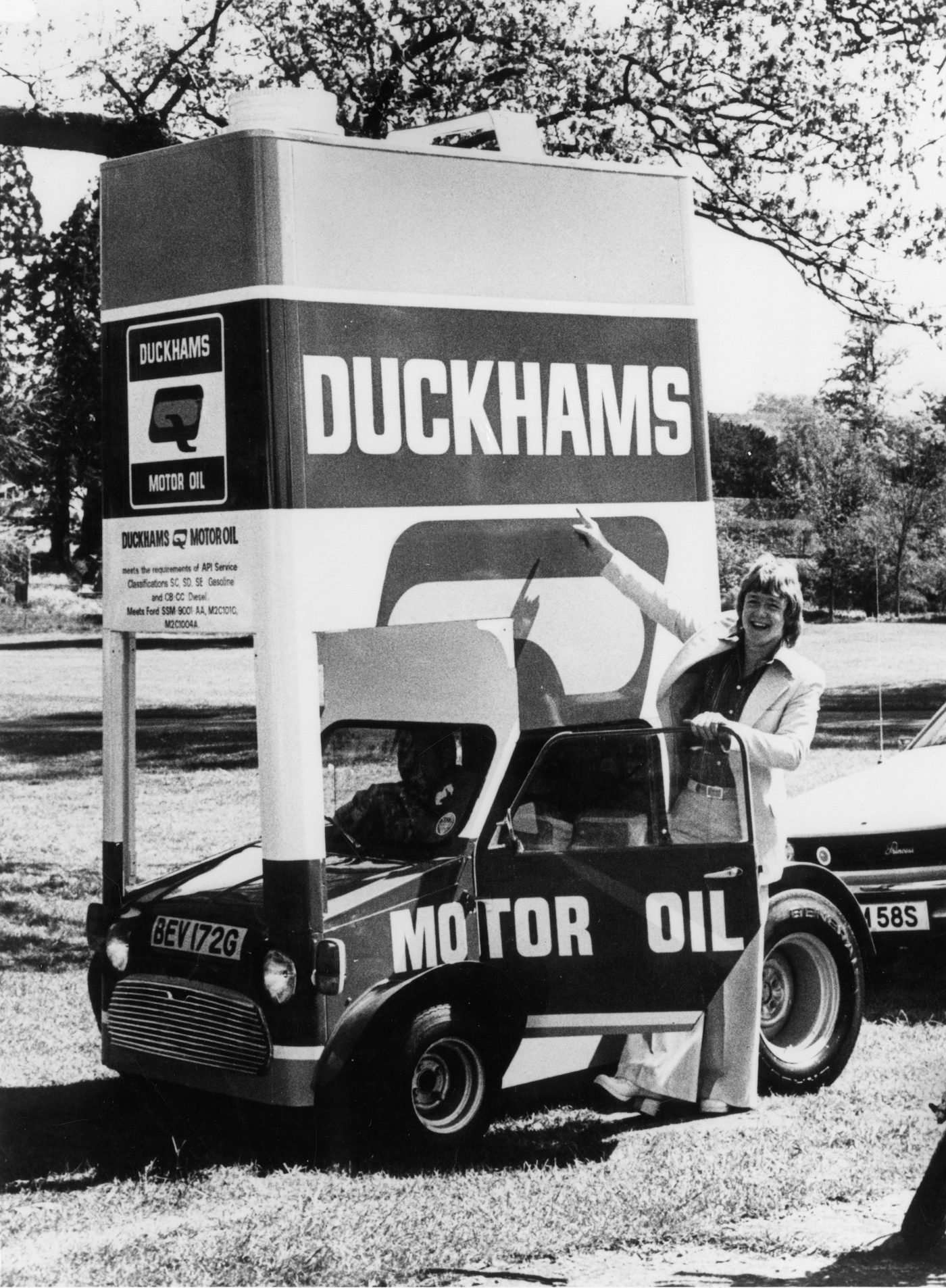
The Duckhams promotional Mini, shown in 1978 with with TV personality, Keith Chegwin - Initially only Morris versions had Mini in their name – they were called Morris Mini-Minors as they were smaller than the Morris Minor, also styled by Alec Issigonis. The Mini moniker caught on and by 1969 was a brand in its own right
- The Riley Elf and Wolseley Hornet were upmarket versions produced by BMC itself, while still more luxurious variants were offered by such specialist coachbuilders as Radford and Hooper
- Early Minis were not without their problems, the most common being leaking floors and drowned distributors – canny owners soon learned to keep a can of WD40 in the door pocket
- Mini-Coopers won the Monte Carlo rally from 1964 to 1967 inclusive. Weary of their premier event being dominated by the British, the French found a way of disqualifying Mäkinen’s car from the 1966 results
- The miniskirt was reputedly named after the Mini, Mary Quant’s favourite car – a fact about which she commented, ‘neither is any longer than necessary’
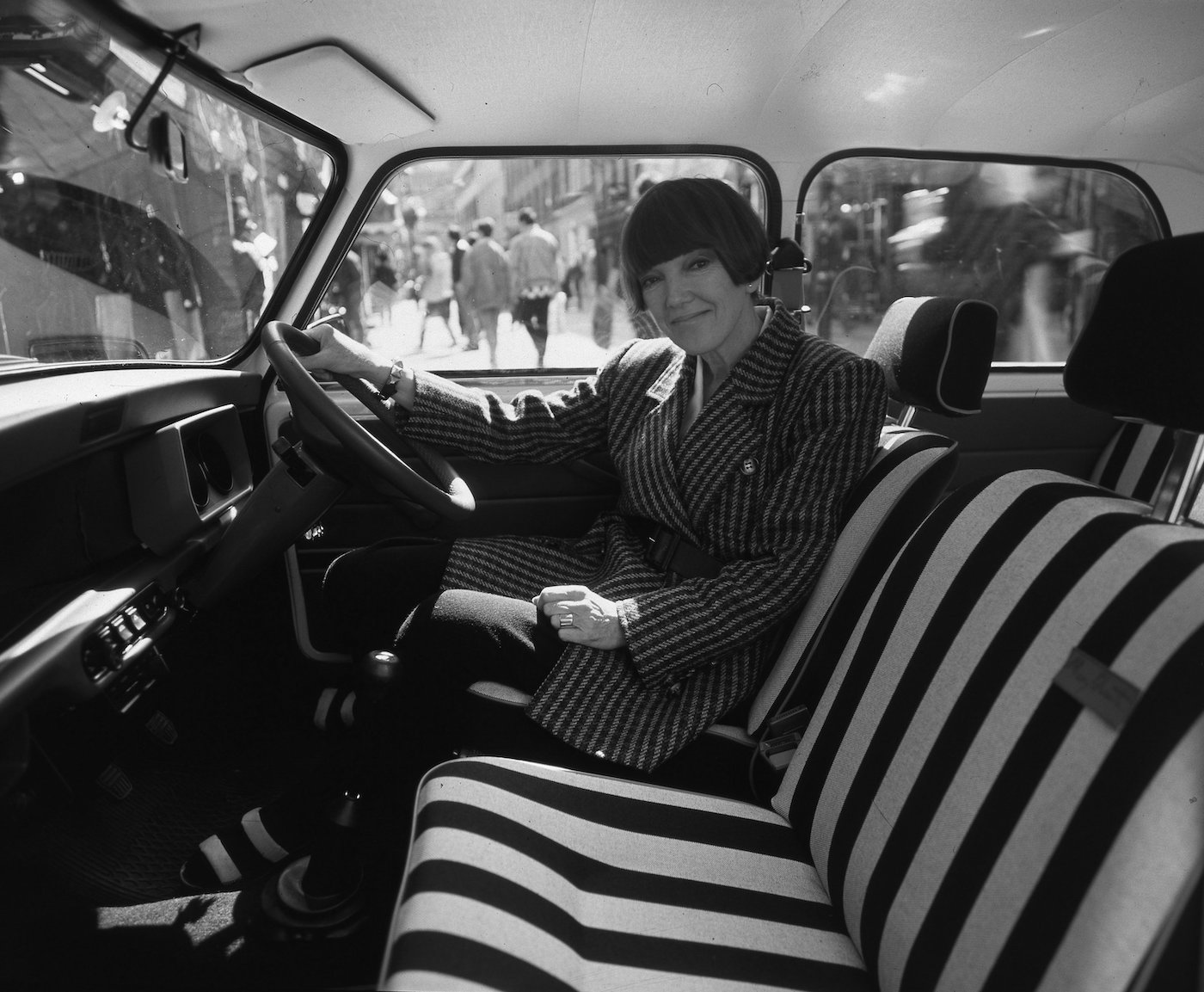
Mary Quant looking stylish in a Mini - ‘621 AOK’, the first production Mini, still exists and is on display in the British Motor Museum in Gaydon – as are the last of the line, the Cooper Sport 500 ‘X411 JOP’, and ‘33 EJB’, the Mini-Cooper in which Paddy Hopkirk won the 1964 Monte Carlo Rally
- There were more variants made of the classic Mini than any other British model – ie saloons, hot saloons (Cooper), very hot saloons (Cooper S), superheated saloons (ERA Turbo), luxury extended boot saloons (Elf, Hornet), extended nose saloons (1275 GT, Clubman); estates (Traveller, Countryman); convertibles; vans; pick-ups; and jeep-like buggies (Moke)
- The CV joints on the drive shafts were adapted from a Czech design used in submarine periscopes
- Following their win in the 1964 Monte Carlo Rally, Paddy Hopkirk, co-driver Henry Liddon and their Mini starred on the blockbuster TV show Sunday Night At The London Palladium
- The first prototype Mini was nicknamed the ‘Orange Box’ owing to its lurid paint scheme. Like the second more sedately finished one, its camouflage included an Austin A35 grille
- If all the classic Minis made were placed end to end they would apparently stretch twice around the UK’s coastline
- Though clearly aimed at the lower end of the market, the Mini has often been described as ‘classless’, having found favour with film stars, sports idols and pop icons; not least all four Beatles
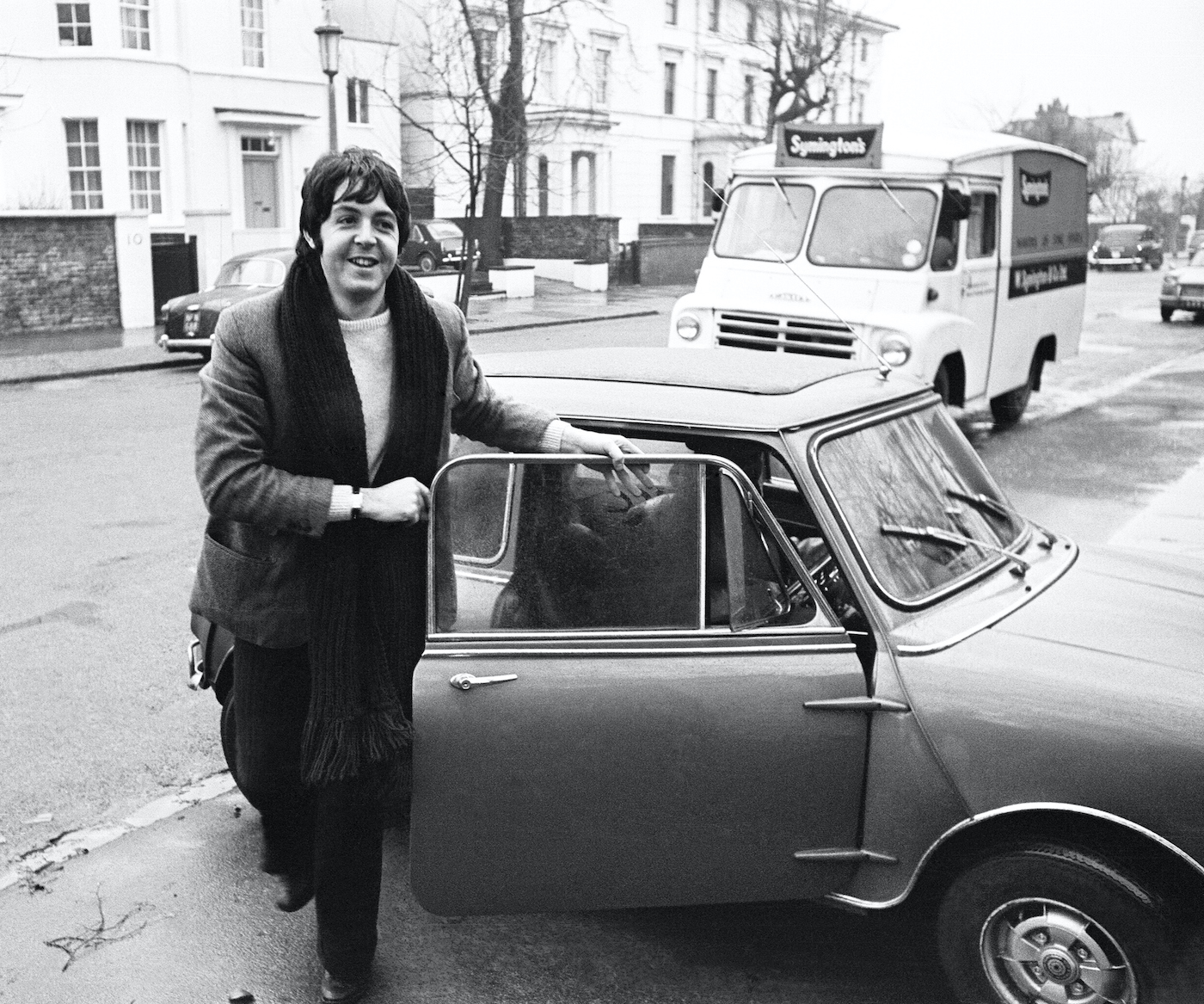
Paul McCartney of the Beatles with his Mini on 27th December 1967. (Photo by Wilson/Mirrorpix/Mirrorpix via Getty Images) - There are reputedly a staggering 469 Mini clubs in the UK, and a further 260 throughout the rest of the world
- No less than 3,016 bolts, screws and nuts were involved in the construction of each Mini
- Car production was a lot slower in 1959 and each Mini took 30 hours to construct
- Minis sold in Denmark were badged Morris Mascot
- In 1999, 133 motoring journalists voted the Mini ‘The 2nd Most Influential Car of the 20th Century’. Only the Model T Ford scored higher marks
- The go-faster Mini-Cooper brand resulted from a collaboration between BMC and John Cooper of Formula One fame
- The Mini was never equipped with conventional suspension. Early and late examples featured a rubber cone set-up, while interim versions sported an interconnected Hydrolastic system
- Issigonis’ decision to place the engine across the Mini’s nose was pretty revolutionary (though DKW had pioneered it many years earlier) and set the pattern for most ensuing small cars. It allowed 80% of the interior to be allocated to passenger and luggage space
- Though produced for 41 consecutive years, the Mini was never a truly profitable model for its maker
- To optimise the Mini’s cabin space and simplify production, the Mini featured external panel seams, while the hinges for the doors and bootlid were initially also positioned outside the car
- The Mini’s designer, Alec Issigonis, was an avid smoker, which probably explains why the car initially had no less than three ashtrays
- The Austin version of the Mini was originally slated to be called the Newmarket, in the vein of the existing Westminster and Cambridge models
- In order to optimise storage space, the Mini featured sliding windows, allowing the doors to be single-skinned, with large storage bins built into their bases
- The Mini is the best-selling single model of British car in history
- The Mini’s designer, Sir Alexander Arnold Constantine Issigonis, was born in 1906 in Smyrna, Asia Minor, of a Greek father and German mother. He was a first cousin of Bernd Pischetsrieder, one time director of BMW and then Volkswagen
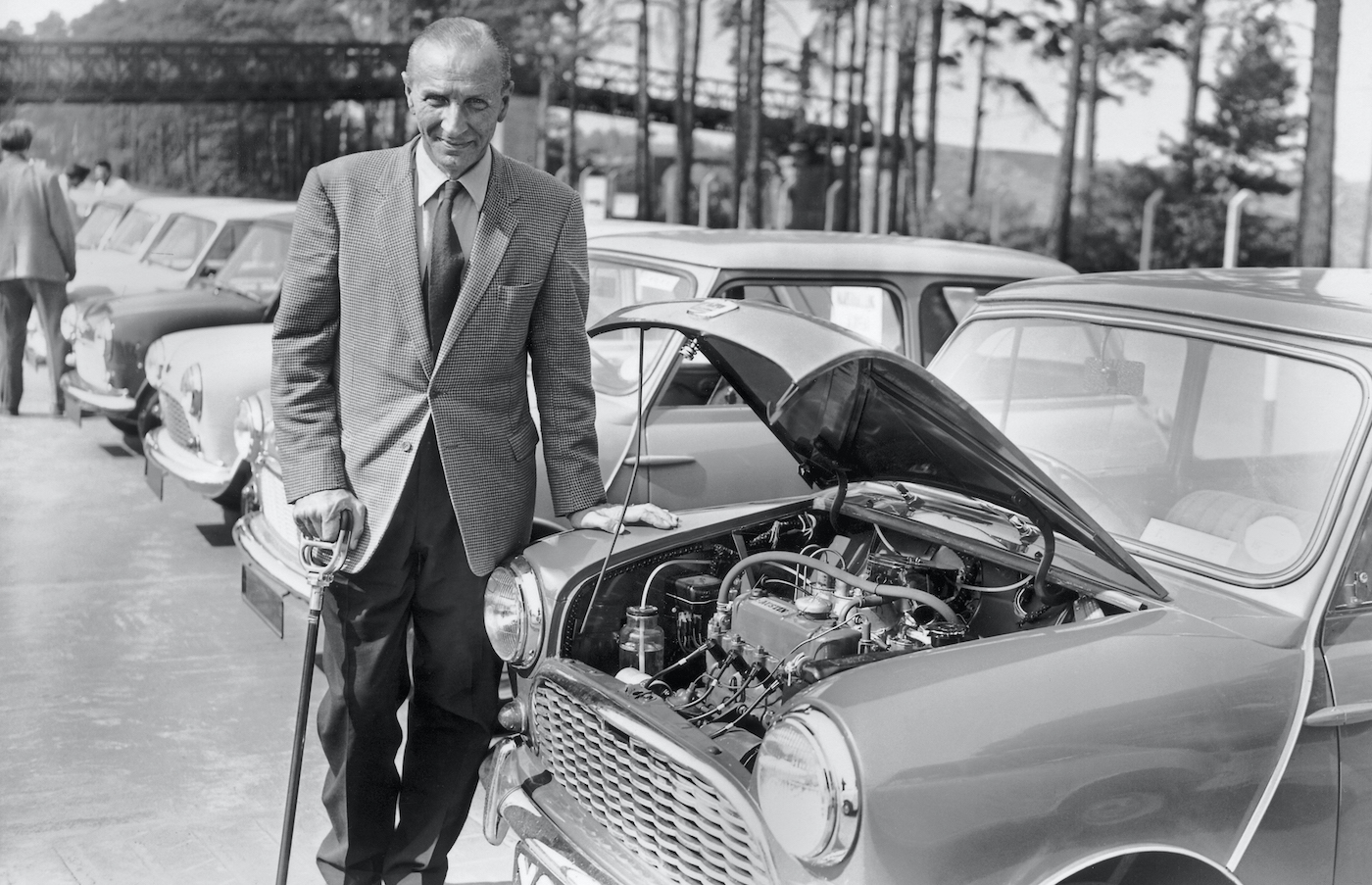
The Mini’s designer, Alec Issigonis - In addition to the UK, Minis were manufactured or assembled in Australia, Belgium, Chile, Italy, Malaysia, Malta, New Zealand, Portugal, South Africa, Spain, Uruguay, Venezuela and Yugoslavia
- Over half of all UK-produced Minis were exported
- In 1991 Autocar magazine voted the Mini ‘The Greatest Car of All Time’
- 34cm – the distance between Alastair Moffat’s classic Mini and those ahead and behind that won him the Guinness World Record for reverse parallel parking
- The Mini’s tiny design team consisted of just Alec Issigonis, Jack Daniels, Chris Kingham, two engineering students and four draughtsmen
- The Mini’s project code was ADO15, where ADO stood for Austin Drawing Office
- Entries for the London Design Museum’s 1999 Celebrity Design Contest included a mirror-plated Mini courtesy of pop icon, David Bowie
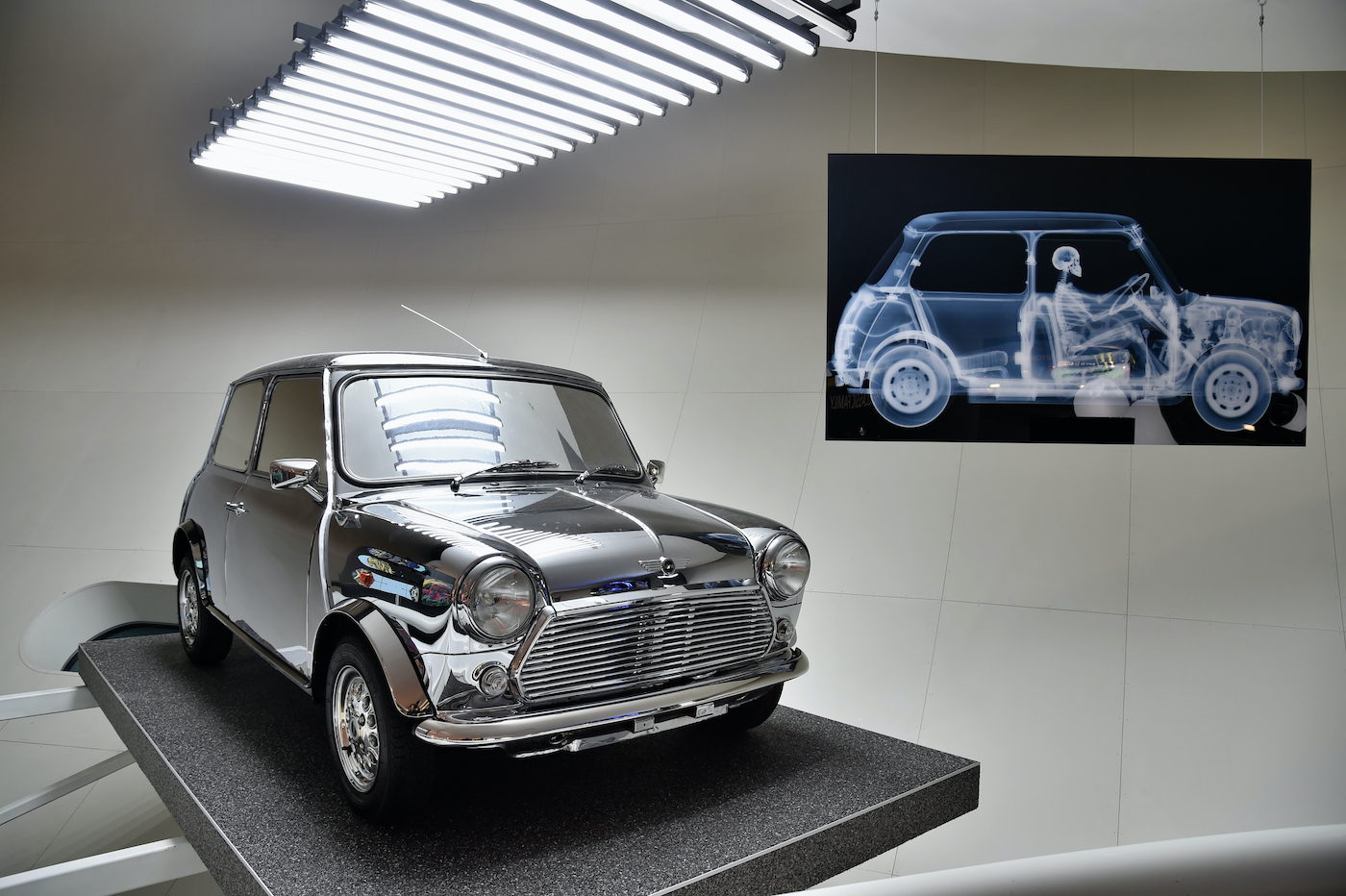
David Bowie’s mirror-plated Mini at the the London Design Museum’s 1999 Celebrity Design Contest - Issigonis initially wanted the Mini to run on 8in wheels, but this was rejected by Dunlop who settled for 10in ones – still tiny by general standards
- Early Minis were sold with the option of wicker baskets specially shaped to fit under the rear seat
- In the 1970s the Italian company Innocenti produced a Bertone-designed hatchback on the Mini platform, which proved popular in mainland Europe
- Asked about the crashworthiness of the Mini, Issigonis reportedly said ‘I make my cars with such good brakes and steering that if people get into a crash it’s their own fault. I don’t design my cars to have accidents’
- Readily available and (for many years) cheap to buy, the Mini is the perfect basis for all types of special, and at one stage 120 Mini-based car kits were on offer
- All told, seven marks of classic Mini were produced
- Over the span of its production, the Mini was powered by no less than seven sizes of the A Series engine – 848cc, 970cc, 997cc, 998cc, 1071cc, 1098cc and 1275cc
- One of designer Issigonis’ many space-saving decisions was to mount the Mini’s transmission in the engine’s sump, as opposed to in tandem, as with most other makes of car
- Having proved unsuitable for the military, the Mini Moke ultimately achieved global popularity as a recreational and utility vehicle – some 50,000 were made between 1964 and 1968
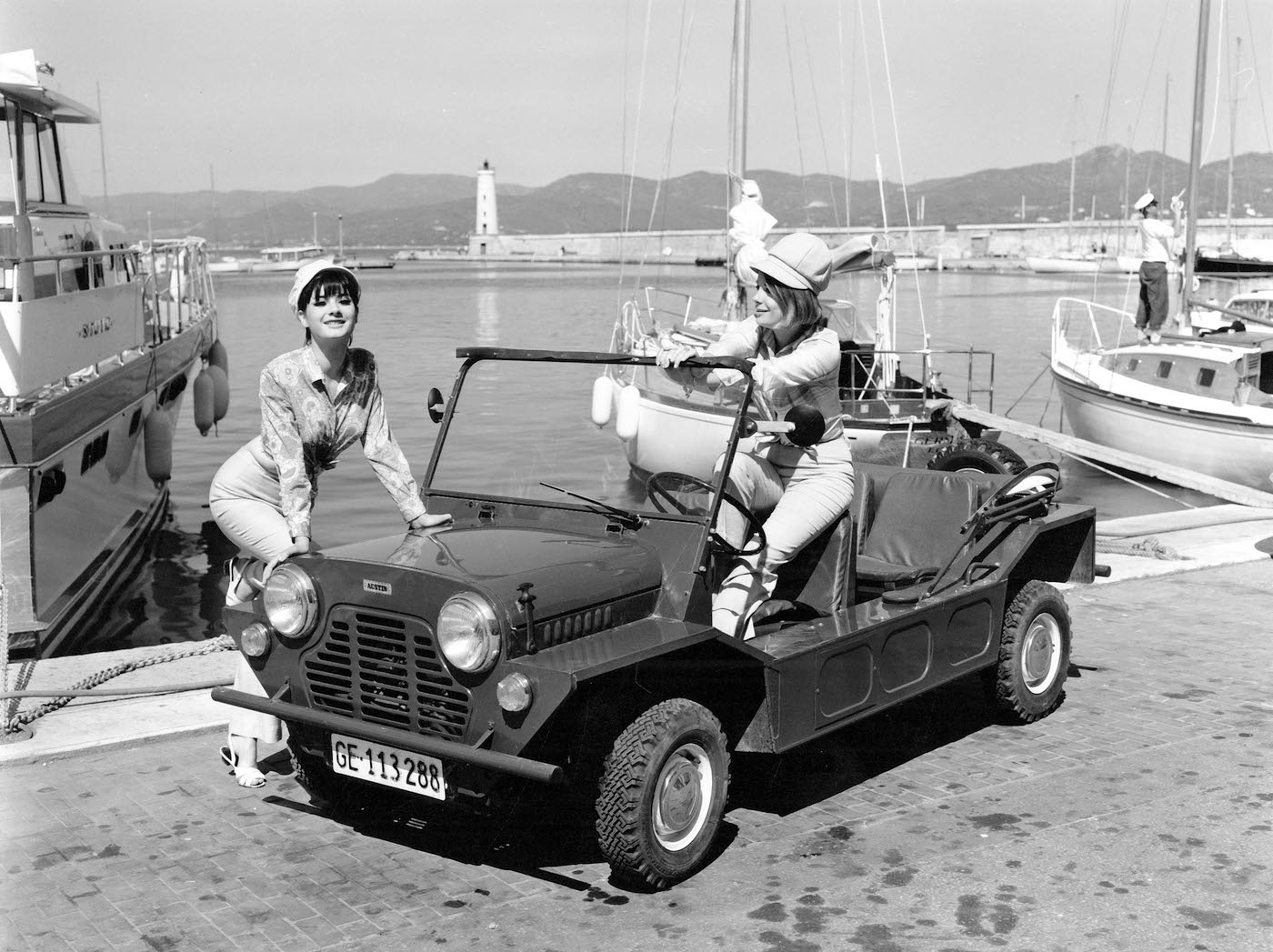
The Moke accidentally became a leisure vehicle - Minis proved to be motorsport marvels and among their many successes were five British Saloon Car Championships, two European Touring Car Championships, three British Rally Championships and two European Rally championships
- A 50th anniversary party for the Mini at Silverstone was attended by 25,000 people and 10,000 cars
- The last classic Mini made, a Solar Red Cooper Sport 500 built on 4 October, 2000, was driven off the Longbridge production line by ‘60s popstar, Lulu
- 5 seconds – the time required to accelerate an 850cc from rest to 60mph





